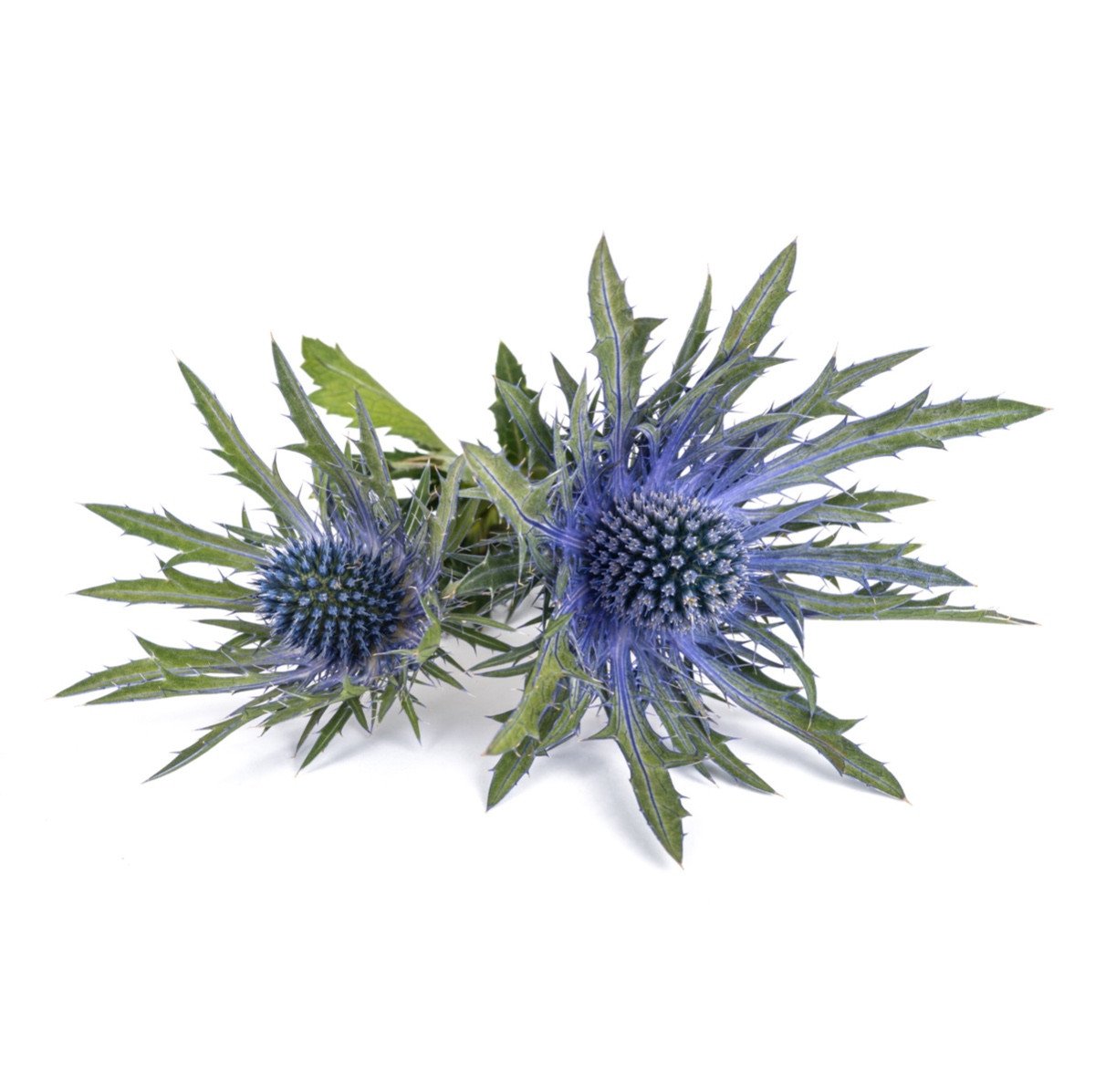Alpine sea holly

Alpine sea holly
Eryngium
Plant family
Umbellifers (Apiaceae)
Also known as
Alpine Eryngo, Queen of the Alps
Season Overview
Propagating
Planting
Harvest
Harvest
J
F
M
A
M
J
J
A
S
O
N
D
1ST YEAR
FOLLOWING YEARS
Details
Light requirement
Sunny
Water requirement
Dry
Soil
Light (sandy)
Nutrient requirement
Low
Plant distance
40 cm
Row spacing
50 cm
Seeding depth
0Not specified
Instructions
Description
The alpine man thistle, alpine thistle, or the blue thistle belongs to the family of umbelliferae (Apiaceae). The Alpine thistle occurs naturally exclusively in mountainous areas, in the Alps as well as in the Jura. It grows up to 80 cm/31.5 in tall. The prickly perennial belongs to the thistles, as do all man-stems. It blooms from July-September with ovate to cylindrical, blue flower umbels, with weakly spiny, pinnately lobed bracts & collars. It is grown as an ornamental plant and also used as a medicinal plant to some extent. Popular with bees.
Origin:
Central Europe
Growing tips
Winter hardy outdoors. Preplant in sand in fall, sow in spring. Cut back in fall. Self-seeds, otherwise divide for propagation. Cold germinator. Good neighbors: rock medlar, forsythia, gladiolus, bluebells, hyacinths, crocuses, carnations, peonies, flame flowers, roses, splendid chartreuse, tender feather grass, bluebunch oats and daffodils/daffodils. Do not plant on the north side of a house or under tall shrubs or trees, as it will not get enough sun there.
Companion Plants
Antagonistic Plants
No antagonistic plants
Diseases
Root Rot
Pests
No pests